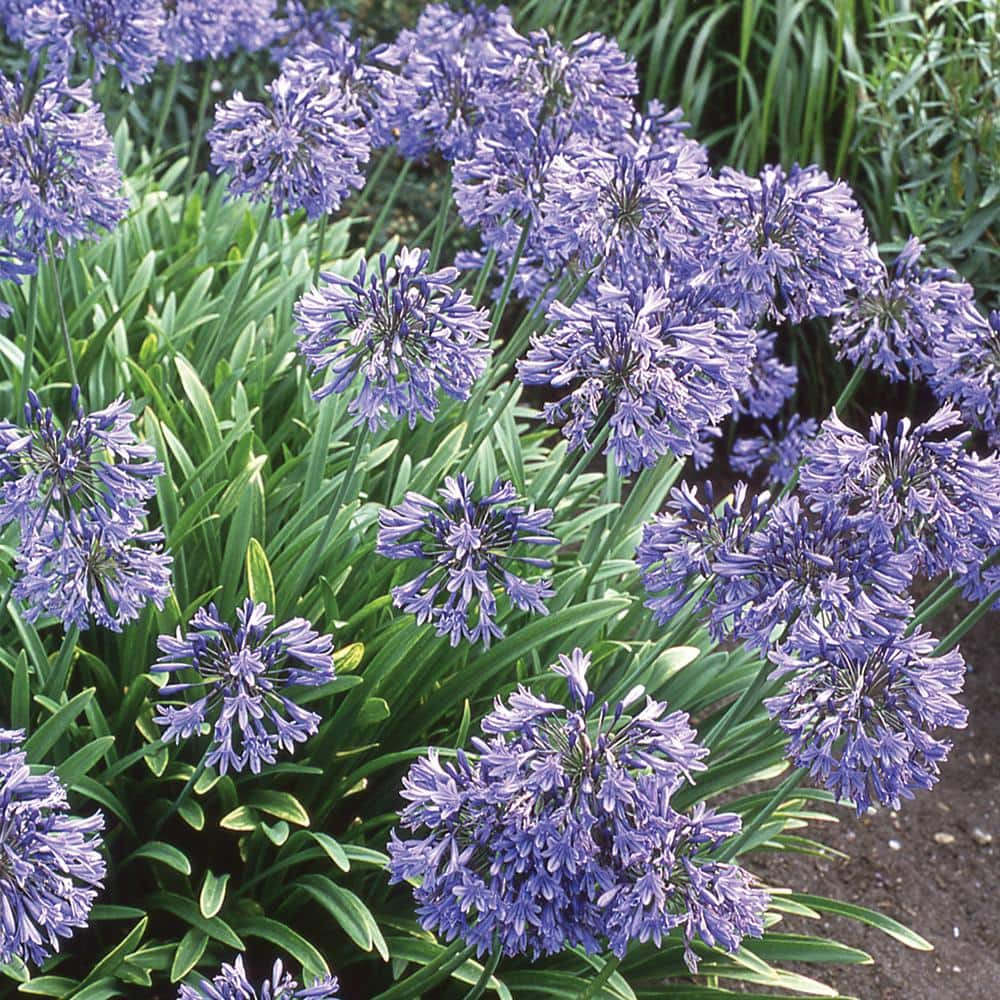Expanding Agapanthus: A Complete Guide to Beautiful Blooms
Expanding Agapanthus: A Complete Guide to Beautiful Blooms
Blog Article
Releasing the Secret to Successful Agapanthus Cultivation: Idea for a Flourishing Garden
In the world of gardening, cultivating agapanthus successfully requires a tactical technique that encompasses various aspects of plant treatment. By comprehending the nuances of agapanthus farming, one can create an atmosphere where these plants prosper and flower generously.
Planting Agapanthus: Ideal Practices
When growing Agapanthus, correct dirt prep work is vital for making certain successful development and growth of these stunning flowers. Agapanthus, typically called Lily of the Nile or African lily, thrives in well-draining dirt with a somewhat acidic to neutral pH degree - Agapanthus. Prior to planting, it is essential to change hefty clay soils with raw material such as compost or peat moss to improve water drainage and offer crucial nutrients for the plants
To grow Agapanthus, select a location that gets complete sunlight to partial shade, as this will certainly promote healthy development and abundant flowering. Dig a hole twice the size of the plant's root ball and place the Agapanthus at the very same depth it was formerly expanding. Gently backfill the opening with dirt, pushing down strongly to get rid of any air pockets around the roots.
Water the recently planted Agapanthus completely and remain to keep the dirt uniformly moist, specifically throughout the plant's energetic expanding period. Agapanthus. Using a balanced plant food once a month can even more sustain the plant's development and blooming. By complying with these best practices for growing Agapanthus, you can develop a sensational screen of these exciting blossoms in your garden
Perfect Dirt Conditions for Agapanthus
For optimum growth and growing success of Agapanthus plants, ensuring the dirt conditions are excellent is critical. Agapanthus prefers soil that is abundant in nutrients, so including a balanced fertilizer throughout the expanding period can advertise healthy and balanced growth and vivid flowers.

Watering and Feeding Tips
To ensure healthy development and vibrant flowers, correct watering and fertilizing techniques are crucial for effective Agapanthus farming. Agapanthus plants profit from regular watering, particularly during the expanding period.
When it involves feeding Agapanthus, a well balanced fertilizer with equivalent components nitrogen, phosphorus, and potassium can be used in the springtime to advertise healthy and balanced growth and flowering. Slow-release plant foods are ideal for giving nutrients progressively over reference an extended duration. Stay clear of over-fertilizing, as this can lead to extreme vegetation growth at the expenditure of flowers.
Additionally, integrating natural matter like compost into the dirt can boost nutrient levels and improve soil framework, assisting in the general wellness of the Agapanthus plants. By complying with these watering and feeding suggestions, garden enthusiasts can guarantee their Agapanthus plants flourish and create sensational display screens of flowers.
Pruning and Deadheading Methods
Appropriate trimming and deadheading methods play a crucial role in keeping the wellness and aesthetics of Agapanthus plants, complementing the crucial practices of watering and feeding for effective farming. Pruning Agapanthus includes getting rid of spent blossom heads, dead or yellowing fallen leaves, and total shaping company website of the plant to promote better growth. Deadheading, the process of getting rid of discolored flowers, not only boosts the plant's appearance yet additionally motivates additional flowering.
When deadheading Agapanthus, it is advisable to trim off the flower stem at the base making use of sharp, clean shears. This process redirects the plant's power from seed manufacturing back right into root and foliage development, advertising a much healthier and much more durable plant. Routine deadheading can extend the blooming period of Agapanthus and avoid self-seeding, which can bring about congestion.
In terms of pruning, Agapanthus typically take advantage of a light trim after blossoming to clean up the plant and urge fresh development. Cutting down the invested blossom stems and getting rid of any kind of dead or damaged vegetation helps keep the plant's vitality and general appearance. Nonetheless, it is necessary to avoid reducing into the crown of the plant, as this can compromise its health.

Protecting Agapanthus From Vermins and Diseases
Carrying out effective bug and disease administration strategies is important to guarding the health and wellness and vigor of Agapanthus plants in farming. Agapanthus are normally sturdy plants, however they can still succumb to various parasites and illness otherwise properly cared for. One usual bug that affects Agapanthus is the Agapanthus borer, a caterpillar that passages right into the plant, causing damages to the fallen leaves and flowers. To avoid infestations, normal inspection of the plants is necessary. If borers are found, they can be manually eliminated, or insecticidal soap can be utilized as a control step.
In enhancement to bugs, Agapanthus are susceptible to illness such as root rot and fungal fallen leave spots. By staying cautious and addressing parasite and disease concerns quickly, gardeners can aid their Agapanthus grow and grow.

Conclusion
Finally, effective growing of agapanthus calls for proper planting strategies, perfect soil conditions, sufficient watering and feeding, regular trimming and deadheading, and security from parasites and conditions. By adhering to these methods and pointers, garden enthusiasts can ensure a growing garden filled with beautiful agapanthus blossoms. Agapanthus. Remember to keep consistent treatment and interest to information to promote the health and long life of these spectacular plants
When planting Agapanthus, appropriate soil preparation is important for making sure effective development and advancement of these attractive blossoms.Water the freshly planted Agapanthus thoroughly and proceed to maintain the dirt equally wet, particularly during the plant's active growing period.For optimal development and flowering success of Agapanthus plants, guaranteeing the dirt this link conditions are ideal is critical. When transplanting or growing Agapanthus, ensure the dirt is well-prepared to give the required foundation for the plants to establish themselves efficiently. One usual bug that impacts Agapanthus is the Agapanthus borer, a caterpillar that passages right into the plant, triggering damages to the leaves and blossoms.
Report this page